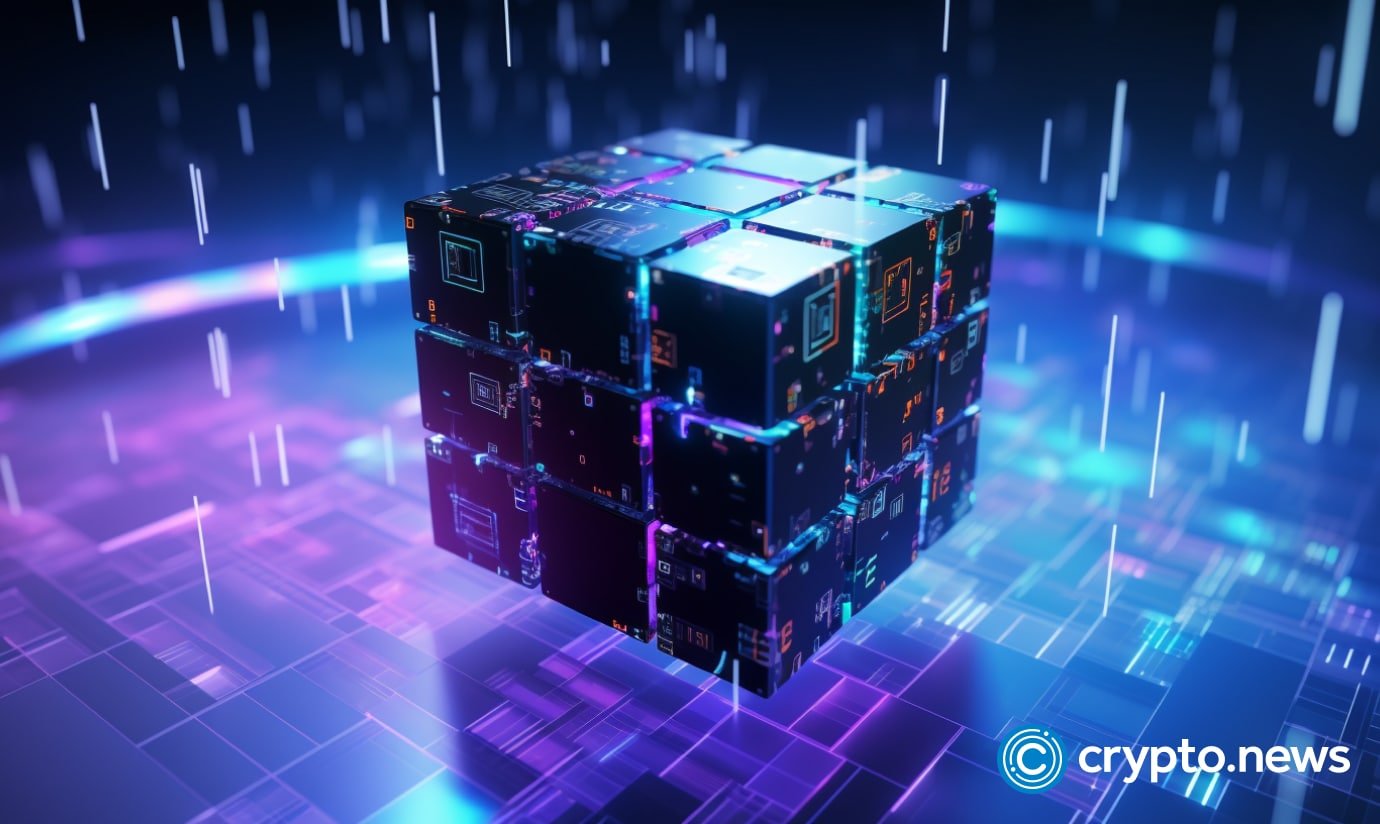DeFi
Red-Hot DeFi Platform Usual Faces Backlash as Protocol Update Triggers Sell-Off
Published
4 months agoon
By
admin

Usual Protocol, an up-and-coming decentralized finance (DeFi) protocol that has seen a remarkable rise over the past months, faced community backlash on Friday after a tweak in the protocol’s yield-generating token triggered a sell-off on secondary markets.
Amid the turmoil, the protocol’s USD0++ token, which represents a locked-up – or staked – version of its $1-anchored stablecoin USD0, fell briefly below 90 cents from $1 on decentralized marketplace Curve. The protocol’s governance token, USUAL, plummeted as much as 17% through the day before recovering some of the losses.
The selloff was caused by a change in the redemption mechanism of USD0++ token introduced by the team on Thursday that caught investors and liquidity providers off-guard.
By design, USD0 is backed by short-term government securities to keep its price at $1. Stakers on Usual receive USD0++ that comes with a four-year lock-up period, meaning that investors are locking up their funds without being able to redeem in exchange for rewards earned in the form of the protocol’s USD0 and USUAL tokens. Yield farmers rushed in, catapulting the protocols total value locked (TVL), a key DeFi metric, to $1.87 billion earlier this week from less than $300 million in October.
However, the new feature called “dual-path exit” will allow investors to redeem the locked-up tokens early at a 0.87 USD0 floor price, or at par, by giving up a part of the rewards earned, calling the 1:1 exchange rate into question.
The abrupt implementation drew criticism across DeFi users for changing the design without warning. In certain liquidity pools, the token’s price was hardcoded to worth $1, causing havoc among borrowers and liquidity providers.
“Did they just allow degens to jump in at 1:1 and then rug the USD0++?,” prominent DeFi analyst Ignas said in an X post. “They pushed for the largest USD0/USD0++ pool on Curve knowing all well that USD0++ shouldn’t trade at 1:1.”
“DeFi continues learning the most important truth about pegs: a peg is a story about why two things that are not the same are interchangeable for each other,” noted Patrick McKenzie, advisor to payments firm Stripe.
The Usual team said in a statement that the design change with the early unstaking mechanism was communicated in advance from October. The protocol will also activate the revenue switch starting on Monday and start distributing the protocol’s earnings to governance token holders who stake their coin for longer-term (USUALx).
“The current situation regarding USD0++ stems from a misunderstanding of the protocol’s mechanisms along with a communication that should have been better articulated,” the statement reads. “We apologize and we’ll continue to do our best to communicate transparent information to users.”
The episode is another lesson for crypto investors about the potential risks of DeFi products that entice users with high-yields via token incentives and rewards flywheels.
“Users who are taking risk need to know what the exact rules are and be able to trust that they won’t change, otherwise it can result in market panic,” Rob Hadick, general partner at venture capital firm Dragonfly, told CoinDesk. “We should be thankful this happened now, before the protocol became a risk to the broader DeFi ecosystem.”
Still, USD0++ traded recently at 0.91 USD0 in the Curve pool, while the protocol’s total value locked, a key DeFi metric, dropped below $1.6 billion.
Source link
You may like


Here’s How Bitcoin Could Boost Demand for US Treasuries, According to Macro Guru Luke Gromen


Experts Predict US Recession in 2025 if Trump-China Trade War Tariffs Stay


Monero Jumps 51% After ‘Suspicious Transfer’ of $333M in Bitcoin


ZachXBT flags suspicious $330M Bitcoin transfer triggering Monero surge


Monero’s XMR Rockets 40% as XRP Leads Crypto Majors Gains


The 5 top crypto loan platforms of 2025
DeFi
Monad partners with Chainlink for oracle services ahead of mainnet launch
Published
5 days agoon
April 23, 2025By
admin

Monad has partnered with Chainlink to integrate its oracle services as its mainnet launch looms.
Monad, an EVM-compatible Layer 1 blockhain, has announced a partnership with a leading decentralized oracle provider Chainlink (LINK). When the mainnet launches, developers on Monad will have immediate access to Chainlink’s full suite of Web3 services, including Data Feeds, Data Streams, and the Cross-Chain Interoperability Protocol.
Thanks to Chainlink’s Data Feeds and Data Streams integrations, Monad developers will be able access accurate, tamper-proof market data—such as asset prices and exchange rates—enabling them to build DeFi apps like lending platforms and DEXs. Chainlink’s CCIP will enable secure, programmable cross-chain token transfers, laying the foundation for building interoperable dAapps.
The development comes on the heels of another big announcement from the project, which confirmed that USD Coin (USDC) will be available on the Monad chain starting from day one of its mainnet launch.
Backed by $244 million in funding led by Dragonfly and Paradigm, Monad is an EVM-compatible L1 chain that supports over 10,000 transactions per second, fast block times, low fees, and quick finality, made possible by its parallel execution model.
On Feb. 19, the project launched its testnet alongside an ecosystem directory of 50+ apps, infrastructure providers, and integrations, giving users and developers a robust environment to explore, build, and test on from day one. Phantom, OKX, Uniswap Wallet, and Backpack users can connect instantly, while others can onboard manually via testnet.monad.xyz. A built-in faucet offers testnet MON tokens to for interactions with Monad dApps.
The mainnet launch is slated for the first quarter of 2025, but the exact date is yet to be announced.
Source link

Disclosure: The views and opinions expressed here belong solely to the author and do not represent the views and opinions of crypto.news’ editorial.
Crypto is out of narratives, out of patience, and running out of time to matter. The only way out is forward—by building products people actually use and don’t have to think about. For the past several months, AI agents have been pitched as that future, but most of them are just noise: flashy wrappers that don’t actually do anything.
In the middle of a macro meltdown, with Ethereum’s (ETH) value against Bitcoin (BTC) hitting five-year lows and Bitcoin trading like a high-beta tech stock, no one is begging for another DEX, bridge, or wallet extension. The problem isn’t discoverability. It is a utility. We’ve built an industry optimized for speculation, not service. A financial arcade, not a functioning economy. Most crypto apps don’t have users because they don’t solve anything real.
Volatility is the tell. If crypto were used at scale, real demand would anchor the price. But when macro conditions shift, the whole sector moves in lockstep—because actual usage doesn’t matter. That’s not a UX issue. That’s a product problem.
If crypto wants to survive this phase—let alone escape the echo chamber in the next cycle—we need to stop building abstractions for each other and start building real products for real people.
Why it keeps happening
Crypto has never grown out of its builder-for-builder roots. Success is defined by shipping, not retention. We reward composability over usability. Launches over DAUs. TVL over usefulness.
That’s how we ended up with a wave of AI agents that look good in demos but fall apart in practice—built to impress, not to endure. Builders build for other builders. Teams optimize for token launches, not long-term users. Most roadmaps are driven by narrative timing, not customer feedback. The result? Products that impress on crypto Twitter but don’t matter to anyone outside of it.
User experience is still considered surface-level polish when it should be foundational. We talk about onboarding like it’s a marketing problem, not an architectural one. And we wonder why users churn faster than altcoins collapse.
Not all AI agents are the answer
Take a look at what’s been happening with AI agents in crypto. We’re pretending automation means intelligence. But users don’t need agents that talk. They need agents that do.
And they need agents that can operate with intent: taking autonomous action, interacting onchain, and accruing value, not just information. If this is going to be the narrative of the next cycle—and it might be—we need to raise the bar. What’s missing isn’t another chatbot. It’s autonomy, action, and economic alignment.
The next generation of agents must be onchain actors—agents with memory, incentives, and agency. Not just slick AI interfaces, but participants in the network itself.
What a real product looks like
A real product solves a real problem—clearly, quickly, and without friction. It doesn’t need an explainer thread. It feels like magic, not a UI puzzle. In crypto, the magic moment happens when a product abstracts away the protocol, when it does something for the user without making them think about networks, wallets, or bridges.
Imagine an AI agent that quietly monitors your wallet, and the moment your airdrop unlocks, it claims it and sells at optimal execution—no prompts, no extra steps. At the same time, it watches gas prices and dips into stable-yield reserves you forgot you had, automatically buying the dip without you lifting a finger. When you need to bridge funds or execute a transaction, it instinctively reroutes you through the cheapest and fastest network available, all without asking which chain you’re on or forcing you to approve a dozen steps. That kind of seamless automation isn’t a feature. It’s the foundation of a real product.
These aren’t features. They’re outcomes. And they’re the foundation of actual adoption.
And so these are the kinds of applications crypto needs to hone in on and devote resources to. Real consumer AI agents are a breakthrough here. They act on behalf of users, claiming, trading, and coordinating. They reduce surface area. They make infrastructure invisible. They don’t rely on speculative hype to attain value; they provide an actual service.
That’s how we get crypto out of the power user corn maze and into everyday relevance.
What needs to change (and why now)
This isn’t just about good design. It’s about product discipline. And the timing has never been better. We’re not just in a bear market. We’re in a trust correction. Retail is gone. The ETF narrative is priced in. Altcoins are bleeding out. The Fed and fiscal policy are driving every headline.
This is the best possible time to build—because no one’s watching. There’s no pressure to chase yield or force hype. There’s room to build quiet conviction around something real. So what should builders actually do?
First, they need to design for behavior, not just composability. It’s not enough that components can plug into one another—what matters is whether people actually use them. Real product design starts with the user’s motivation and workflow, not with modularity.
Second, builders should use automation and agents to reduce decision fatigue. Most crypto products overwhelm users with options. The goal should be to eliminate choices, not add more. A great product handles complexity behind the scenes so the user doesn’t have to think.
Third, it’s time to prioritize retention over liquidity mining. If your product only works because there’s a token incentive attached to it, it’s not a product—it’s a promotion. Focus on building something people come back to without needing a bribe.
Finally, usability should be treated as infrastructure, not decoration. The interface is not the cherry on top—it’s the bridge between function and experience. If it’s not intuitive, it’s broken.
AI agents for consumers aren’t a gimmick. They’re the best shot we have at building something people actually return to. Not because they believe in your token. But because the product does something for them.
Stop building for nobody
We don’t need more tokenized interfaces. We don’t need more demos that explain themselves better than they perform. And we definitely don’t need another yield mechanic disguised as a product.
We need software that helps people get something done. That they come back to because it works, not because they’re speculating. Consumer AI agents are the clearest path to that future. Stop building apps no one uses. Start building ones that people don’t even have to think about.

Garrison Yang
Garrison Yang is the co-founder of Mirai Labs, a web3 development studio building intuitive consumer applications that make crypto usable—and useful—for everyone. With over 15 years of experience across engineering, strategy, growth, and product, Garrison blends technical depth with a marketer’s eye for impact. A former professional gamer, he brings a competitive edge and a deep understanding of user behavior to everything he builds. At Mirai, he’s focused on turning blockchain into something people actually use—without even realizing it.
Source link
Altcoins
Native Asset of Bitcoin DeFi Project Surges by More Than 55% This Week Amid New Token Buyback
Published
1 week agoon
April 20, 2025By
admin
The native asset of a Bitcoin (BTC)-focused decentralized finance (DeFi) project defied the crypto market doldrums and skyrocketed by more than 55% this week.
Threshold Network powers tBTC, a decentralized wrapped Bitcoin that can be used throughout DeFi ecosystems.
The project’s native token, T, is trading at $0.0223 at time of writing, up from $0.0143 one week ago. The 236th-ranked crypto asset by market cap is also up nearly 48% in the past 24 hours alone.
T’s price surge largely materialized after Threshold Network announced on Thursday that it planned to restructure its decentralized autonomous organization (DAO) to reduce annual operational costs by approximately $1.1 million.
Explains the project,
“Added to the more than $8.5 million in annual savings expected from the elimination of tBTC staking rewards, this sets the stage for significant profitability moving forward.
Cost efficiency also allows the DAO to eliminate treasury sales of T tokens, enabling it to strategically reinvest in T token. The DAO treasury will continue to accrue tBTC via bridge fees and T tokens via buybacks as per TIP-54.
Threshold has already completed its first purchase of ~30 million T tokens for 5.8 tBTC…
Given the tight economic linkage between T and tBTC, this shift is expected to create a virtuous cycle of growth, where increased Total Value Locked (TVL) and bridge velocity drive T’s value, attracting further participation and reinforcing the ecosystem’s expansion.”
Follow us on X, Facebook and Telegram
Don’t Miss a Beat – Subscribe to get email alerts delivered directly to your inbox
Check Price Action
Surf The Daily Hodl Mix
 

Disclaimer: Opinions expressed at The Daily Hodl are not investment advice. Investors should do their due diligence before making any high-risk investments in Bitcoin, cryptocurrency or digital assets. Please be advised that your transfers and trades are at your own risk, and any losses you may incur are your responsibility. The Daily Hodl does not recommend the buying or selling of any cryptocurrencies or digital assets, nor is The Daily Hodl an investment advisor. Please note that The Daily Hodl participates in affiliate marketing.
Generated Image: Midjourney
Source link

Here’s How Bitcoin Could Boost Demand for US Treasuries, According to Macro Guru Luke Gromen

Experts Predict US Recession in 2025 if Trump-China Trade War Tariffs Stay

Monero Jumps 51% After ‘Suspicious Transfer’ of $333M in Bitcoin

ZachXBT flags suspicious $330M Bitcoin transfer triggering Monero surge

Monero’s XMR Rockets 40% as XRP Leads Crypto Majors Gains

The 5 top crypto loan platforms of 2025

XRP Price Shows Strength — Breakout Above Key Levels Possible?

Expert Reveals Why The Ethereum-To-Bitcoin Ratio Is Falling

Analyst Says Solana-Based Memecoin Going Much Higher, Sees PENGU Facing ‘True Test’ After April Surge

Nike sued for $5 million over its shutdown of NFT platform RTFKT

Biological Age vs. Chronological Age: Redefining Age in the Digital Era

TRUMP whale regrets sale, pays double to buy back meme coins

Stripe Tests New Stablecoin Project as $3.7T Market Looms

Falling Wedge Pattern Confirms $264 target
Dogecoin Confirms Daily Trend Reversal With Breakout, Retest, And New Uptrend

Arthur Hayes, Murad’s Prediction For Meme Coins, AI & DeFi Coins For 2025

Expert Sees Bitcoin Dipping To $50K While Bullish Signs Persist

3 Voting Polls Show Why Ripple’s XRP Price Could Hit $10 Soon

Aptos Leverages Chainlink To Enhance Scalability and Data Access

Bitcoin Could Rally to $80,000 on the Eve of US Elections

Crypto’s Big Trump Gamble Is Risky

Institutional Investors Go All In on Crypto as 57% Plan to Boost Allocations as Bull Run Heats Up, Sygnum Survey Reveals

The Future of Bitcoin: Scaling, Institutional Adoption, and Strategic Reserves with Rich Rines

Sonic Now ‘Golden Standard’ of Layer-2s After Scaling Transactions to 16,000+ per Second, Says Andre Cronje

Ripple-SEC Case Ends, But These 3 Rivals Could Jump 500x

Has The Bitcoin Price Already Peaked?

A16z-backed Espresso announces mainnet launch of core product

Xmas Altcoin Rally Insights by BNM Agent I

Blockchain groups challenge new broker reporting rule

I’m Grateful for Trump’s Embrace of Bitcoin
Trending

 24/7 Cryptocurrency News6 months ago
24/7 Cryptocurrency News6 months agoArthur Hayes, Murad’s Prediction For Meme Coins, AI & DeFi Coins For 2025

 Bitcoin3 months ago
Bitcoin3 months agoExpert Sees Bitcoin Dipping To $50K While Bullish Signs Persist

 Ripple Price1 month ago
Ripple Price1 month ago3 Voting Polls Show Why Ripple’s XRP Price Could Hit $10 Soon

 24/7 Cryptocurrency News4 months ago
24/7 Cryptocurrency News4 months agoAptos Leverages Chainlink To Enhance Scalability and Data Access

 Bitcoin6 months ago
Bitcoin6 months agoBitcoin Could Rally to $80,000 on the Eve of US Elections

 Opinion6 months ago
Opinion6 months agoCrypto’s Big Trump Gamble Is Risky

 Bitcoin6 months ago
Bitcoin6 months agoInstitutional Investors Go All In on Crypto as 57% Plan to Boost Allocations as Bull Run Heats Up, Sygnum Survey Reveals

 Bitcoin3 months ago
Bitcoin3 months agoThe Future of Bitcoin: Scaling, Institutional Adoption, and Strategic Reserves with Rich Rines


